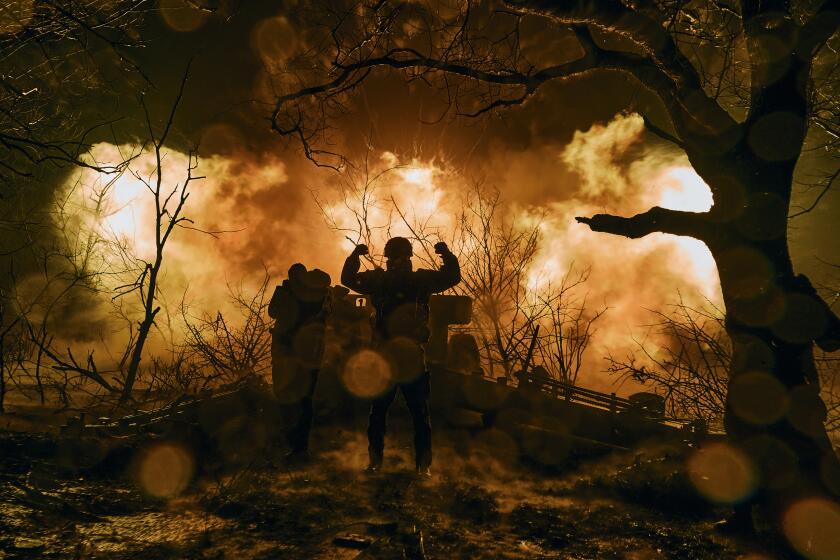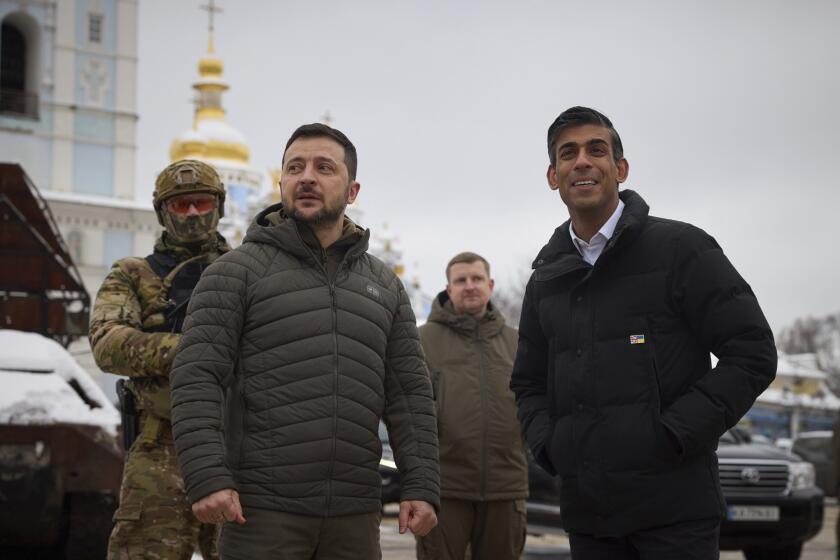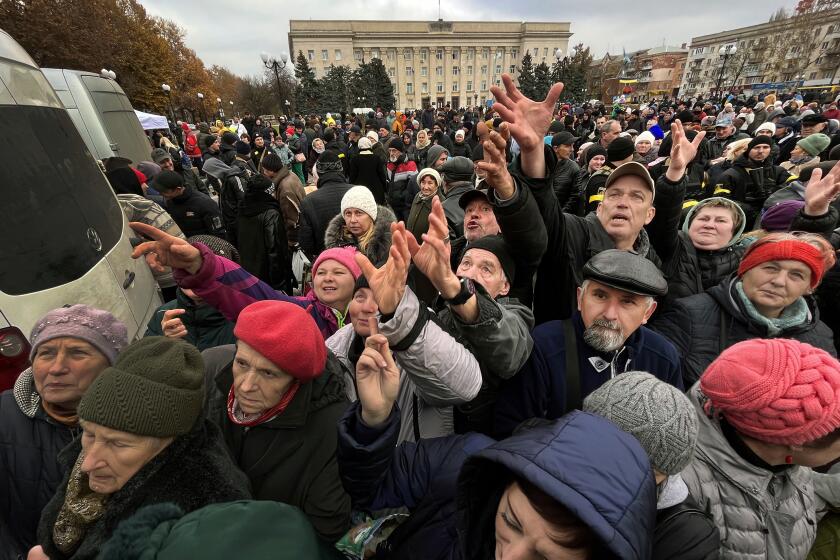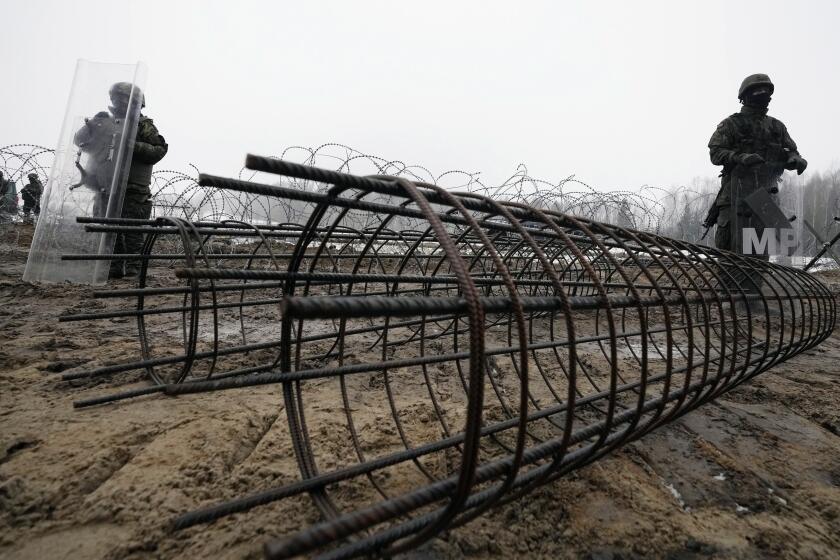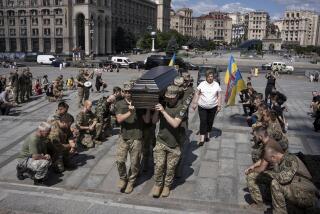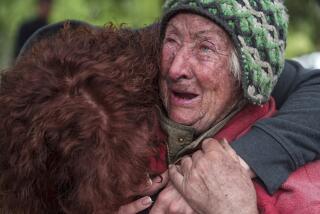Ukraine begins evacuating civilians from liberated areas for the winter

- Share via
KYIV, Ukraine — Ukrainian authorities have started evacuating civilians from the recently liberated areas of the Kherson region and the neighboring province of Mykolaiv, fearing that a lack of heat, power and water due to Russian shelling will make living conditions too difficult this winter. The World Health Organization concurred, warning that millions face a “life-threatening” winter in Ukraine.
Authorities urged residents of the two southern regions, which Russian forces have been shelling for months, to move to safer areas in the central and western parts of the country. Ukrainian Deputy Prime Minister Iryna Vereshchuk said Monday that the government will provide transportation, accommodations and medical care for them, with priority for women with children, the sick and elderly.
Vereshchuk last month asked citizens now living abroad not to return to Ukraine for the winter to conserve power. Other officials have suggested that residents in Kyiv or elsewhere who have the resources to leave Ukraine for a few months should do so, to save power for hospitals and other key facilities.
The WHO delivered a chilling warning Monday about the energy crisis’ human impact on Ukraine.
“This winter will be life-threatening for millions of people in Ukraine,” said the WHO’s regional director for Europe, Dr. Hans Henri P. Kluge. “Attacks on health and energy infrastructure mean hundreds of hospitals and healthcare facilities are no longer fully operational, lacking fuel, water and electricity.”
He warned of health risks such as respiratory and cardiovascular problems from people trying to warm themselves by burning charcoal or wood and using diesel generators and electric heaters.
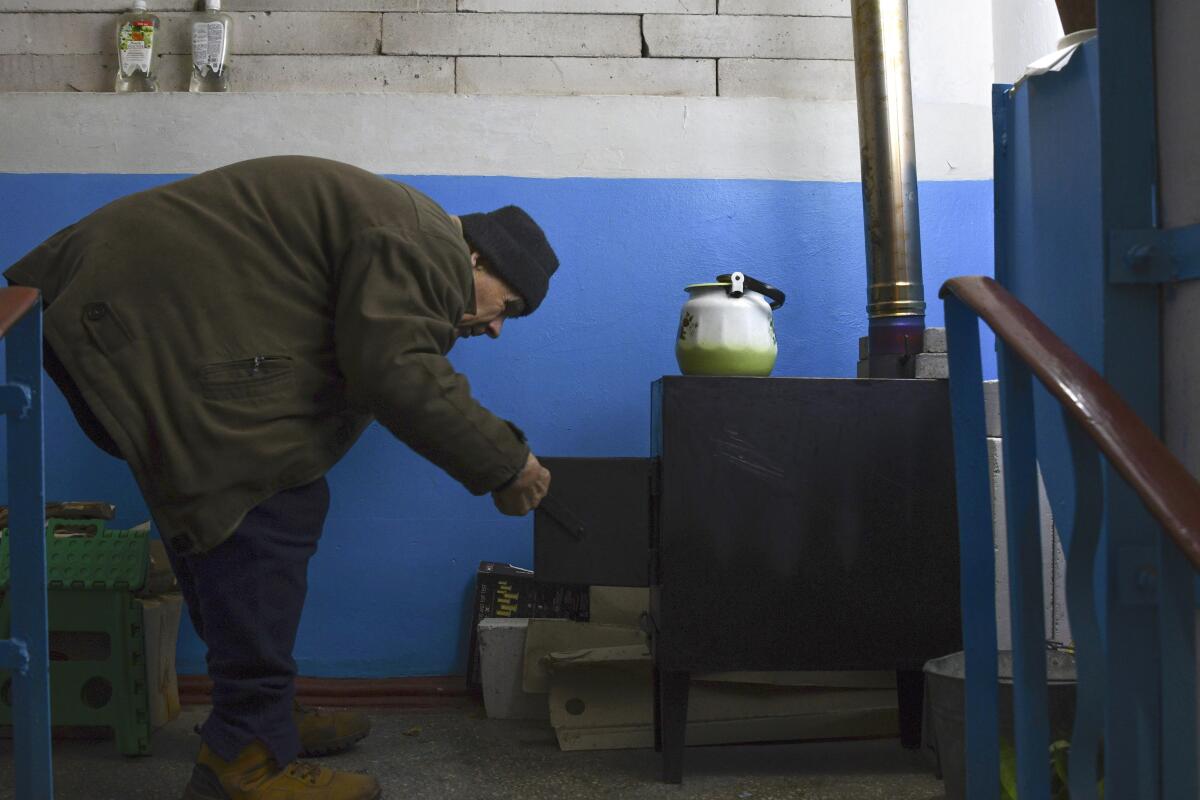
The evacuations are taking place more than a week after Ukraine recaptured the city of Kherson, on the western bank of the Dnieper River, and areas around it in a major battlefield gain. Since then, heading into the winter, residents and authorities alike are realizing how much power and other infrastructure the Russians damaged or destroyed before retreating.
Ukraine is known for its brutal winter weather, and snow has already covered Kyiv, the capital, and other cities.
Russian forces are fortifying their defense lines along Dnieper River’s eastern bank, fearing that Ukrainian forces will push deeper into the region. In the weeks before Ukraine’s successful counteroffensive, Moscow-backed authorities relocated tens of thousands of Kherson city residents to Russian-held areas.
Moscow alleges that Ukrainian forces killed Russian troops who may have been trying to surrender, in an incident apparently caught on video.
Russian-installed authorities in the Kherson region Monday urged people to evacuate an area on the eastern bank of the Dnieper River, which Moscow now controls. Officials cited heavy fighting in Kherson’s Kakhovskiy district.
Russia has been pounding Ukraine’s power grid and other infrastructure from the air for weeks, causing widespread blackouts and leaving millions of Ukrainians without heat, power or water.
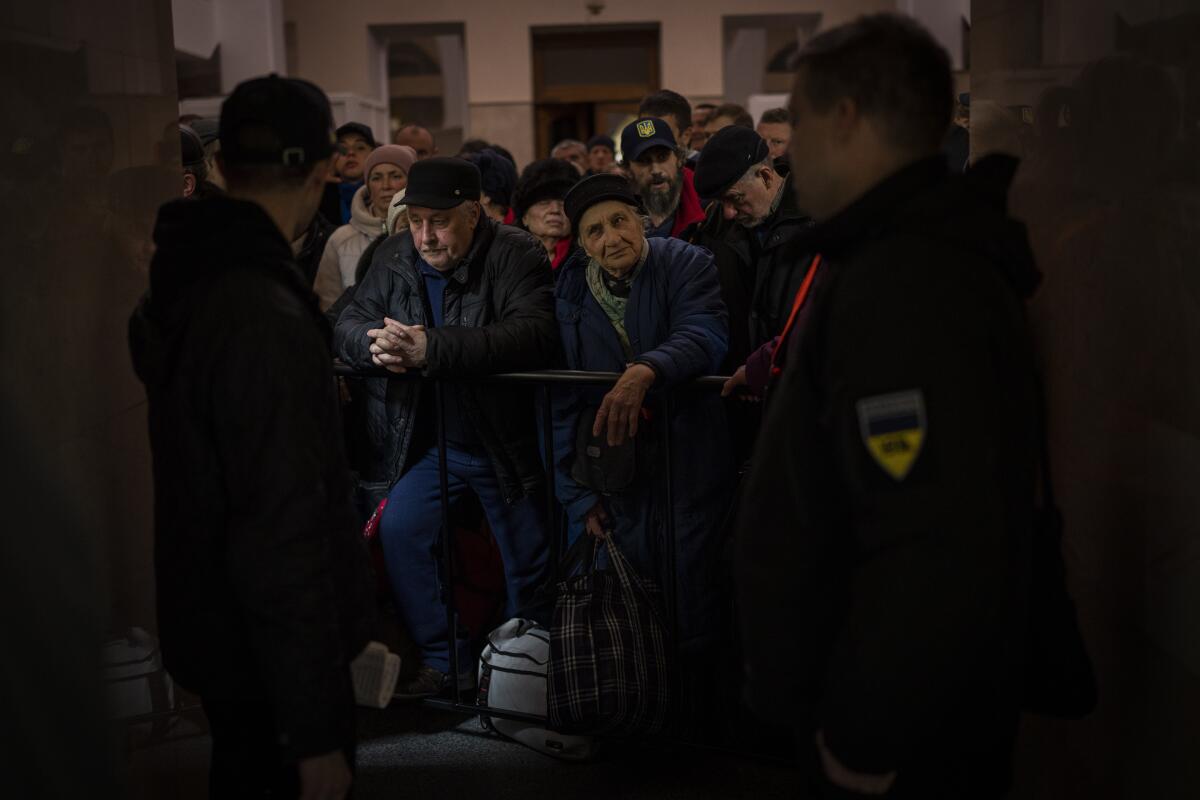
To cope, four-hour or longer power outages were scheduled Monday in 15 of Ukraine’s 27 regions, according to Volodymyr Kudrytsky, head of Ukraine’s state grid operator Ukrenergo. Ukrenergo plans more outages Tuesday. Ukrainian President Volodymyr Zelensky says Russian missile strikes have damaged more than 50% of the country’s energy facilities.
Zelensky on Monday repeated his calls for NATO nations and allies to recognize Russia as a terrorist state, saying that Russia’s shelling of energy supplies was tantamount “to the use of a weapon of mass destruction.” Zelensky also again urged even stricter sanctions on Russia and appealed for more air-defense aid for Ukraine.
The air-defense package comes as Russia has been pounding Ukraine’s power grid and other key infrastructure from the air, causing widespread blackouts.
“The terrorist state needs to see that they do not stand a chance,” he told NATO’s 68th Parliamentary Assembly meeting in Madrid in a video address, after which he said the assembly approved the terrorist designation.
On Sunday, powerful explosions from shelling shook Ukraine’s Zaporizhzhia region, the site of Europe’s largest nuclear power plant. The United Nations’ nuclear watchdog called for “urgent measures to help prevent a nuclear accident” in the Russian-occupied facility.
Kyiv and Moscow blamed each other for the shelling, which came after weeks of relative calm in an area that has been the site of fighting between Russian and Ukrainian forces since Russia invaded Feb. 24. The specter of a nuclear catastrophe has loomed since Russian troops began their occupation of the plant during the early days of the war.
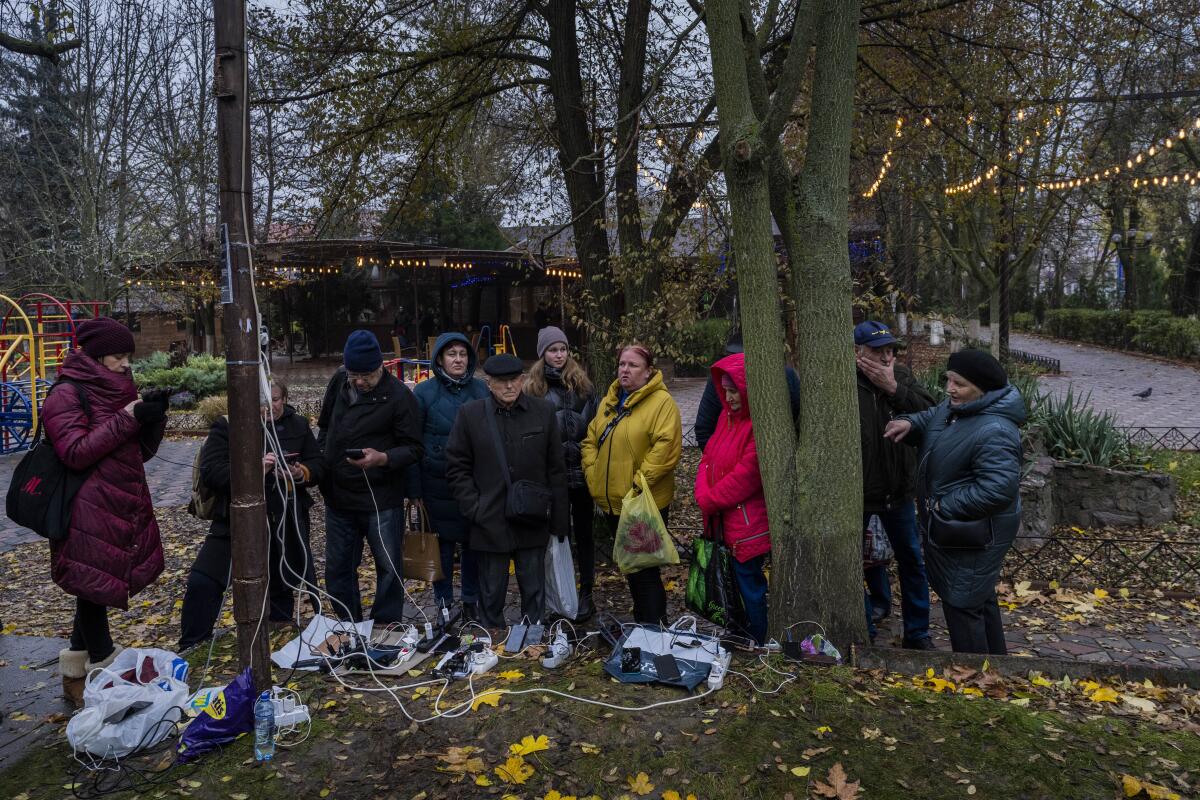
Kherson, the provincial capital occupied by Russia, is back in Ukrainian hands. But its people face privation, along with neighbor-against-neighbor suspicions.
Also Monday, Zelensky and his wife made a rare joint public appearance to observe a moment of silence and place candles at a Kyiv memorial for those killed in Ukraine’s pro-European Union mass protests in 2014. As bells rang in a memorial tribute, Ukraine’s first couple walked under a gray sky on streets dusted with snow and ice up to a wall of stone plaques bearing the names of fallen protesters.
Their visit coincided with fresh reminders Monday of more death and destruction on Ukrainian soil.
At least four civilians were killed and eight more wounded in Ukraine over the past 24 hours, the deputy head of the country’s presidential office, Kyrylo Tymoshenko, said Monday.
A Russian missile strike in the northeast Kharkiv region Sunday night killed one person and left two more wounded, according to Kharkiv Gov. Oleh Sinegubov. The strike hit a residential building in Shevchenkove village, Sinegubov said.
Breaking News
Get breaking news, investigations, analysis and more signature journalism from the Los Angeles Times in your inbox.
You may occasionally receive promotional content from the Los Angeles Times.
One person was wounded in the Dnipropetrovsk region, where Russian forces shelled the city of Nikopol and areas around it, Gov. Valentyn Reznichenko said. Nikopol lies across the river from the Zaporizhzhia nuclear plant.
In the eastern Donetsk region, which is partially controlled by Moscow, Russian forces shelled 14 towns and villages, the region’s Ukrainian governor, Pavlo Kyrylenko, said.
Heavy fighting was ongoing in the region near the Ukrainian-held city of Bakhmut, where a school was damaged. In Makiivka, which is under Russian control, an oil depot was hit and caught fire.
Russian-installed authorities said that more than 105,000 consumers in the province’s capital, Donetsk, were left without electricity Monday after Ukrainian shelling damaged power lines. One person was killed, officials said, and 59 miners were trapped underground after power was cut off to four coal mines.
Russia’s war in Ukraine has ushered in a new era of confrontation in Europe — and the rise of new border barriers of steel, concrete and barbed wire.
In the neighboring Luhansk region, most of which is under Russian control, the Ukrainian army is advancing toward the key cities of Kreminna and Svatove, where the Russians have set up a line of defense, according to Luhansk’s Ukrainian governor, Serhiy Haidai.
“There are successes and the Ukrainian army is moving very slowly, but it will be much more difficult for Russians to defend themselves after Svatove and Kreminna” are recaptured, Haidai told Ukrainian television.
Britain’s Defense Ministry said retaining control of Svatove should be a political priority for Russia but that “both Russian defensive and offensive capability continues to be hampered by severe shortages of munitions and skilled personnel.”
In another development, the U.N.’s International Atomic Energy Agency said its inspectors on Monday reported that weekend shelling of the Zaporizhzhia nuclear power plant, Europe’s largest, had not damaged key equipment and they had identified no nuclear safety concerns.
The six reactors, which are all shut down, are stable, and the integrity of spent and fresh fuel, along with stored radioactive waste, was confirmed, the IAEA said, adding that staff are repairing damage to other equipment.
As they have for months, Kyiv and Moscow blamed each other for the shelling of the Russian-occupied power station, and again the IAEA didn’t comment on who was responsible.
More to Read
Sign up for Essential California
The most important California stories and recommendations in your inbox every morning.
You may occasionally receive promotional content from the Los Angeles Times.
